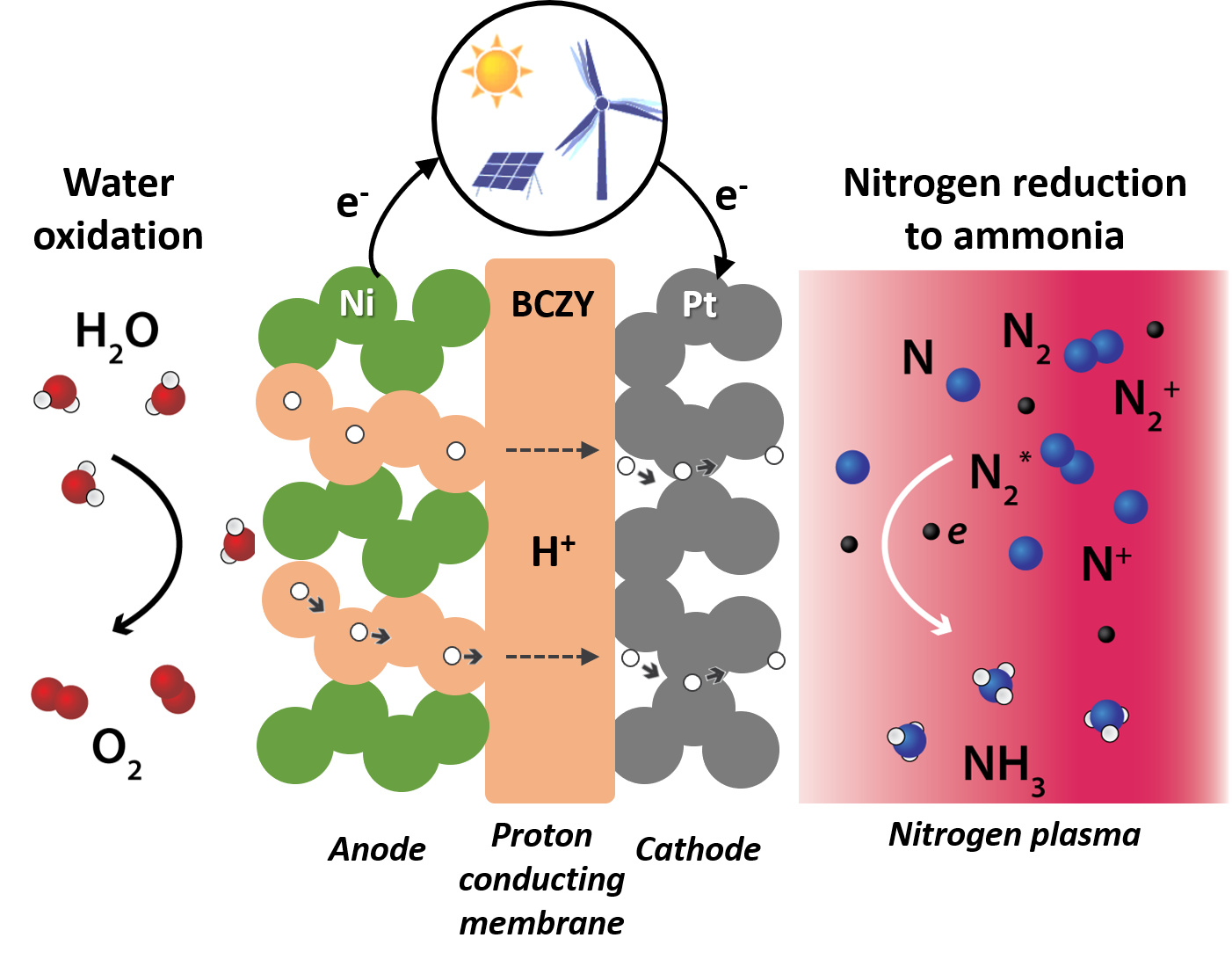DIFFER researchers found an alternative sustainable, all-electric way to produce ammonia from nitrogen and water. Ammonia is an important precursor of fertilizers, as well as a potential carbon-free energy carrier. The researchers published this method in the journal ACS Energy Letters.

water splitting (anode) to the cathode, where they react with
plasma-activated nitrogen gas to form NH3. Copyright: DIFFER
Nowadays, ammonia is synthesized via the Haber–Bosch process, which is a capital- and energy-intensive process with an immense CO2 footprint. Thus, alternative processes for the sustainable and decentralized ammonia production from N2 and H2O using renewable electricity are required.
However, N2 molecule is thermodynamically stable and the triple bond holding the two nitrogen atoms together is one of the strongest known. Therefore, the key challenge for the realization of such processes is the efficient activation of the N2 bond. DIFFER group leader Mihalis Tsampas: “Until now efforts were mainly focused on the materials. What is groundbreaking in our approach is that we use plasma-activation to boost the nitrogen reactivity and an electrolyzer to provide the hydrogen species for the reaction.”
Plasma aided electrochemical approach
DIFFER researchers found an all-electric method for sustainable ammonia production from nitrogen and water, using a plasma assisted electrochemical approach: a plasma-activated proton conducting solid oxide electrolyzer. The plasma basically serves as a means to activate the nitrogen, just before they encounter the hydrogen species, generated by electrolyzer.
DIFFER researcher Rakesh Sharma: “We have effectively demonstrated the NH3 synthesis, by allowing these activated nitrogen to react with the hydrogen species from the water splitting.” The production rate of this method is higher than reported in literature for similar approaches, but still below commercial needs. The researchers expect the performance can be further enhanced to around the industrial needs after optimization.
Food production
Ammonia is a major and valuable material for industry and agriculture. The fertilizes generated from ammonia are important for food production. In addition, ammonia has a potential use as a fuel source. Sharma: “That’s why it is so important to work on sustainable ways to produce it.”
Improve performance
In this approach both the productivity and energy efficiency are not up to the mark for commercial application yet. Thus, future research will focus on finding a suitable electrocatalyst which can efficiently utilize the plasma activated nitrogen. Rakesh and his colleagues would also like to further improve the performance, by advanced reactor design and optimizes use of the plasma.
More information
Plasma Activated Electrochemical Ammonia Synthesis from Nitrogen and Water, ACS Energy Letters, Rakesh K. Sharma, Hrishikesh Patel, Usman Mushtaq, Vasileios Kyriakou, Georgios Zafeiropoulos, Floran Peeters, Stefan Welzel, Mauritius C. M. van de Sanden, and Mihalis N. Tsampas

Go to the News page.